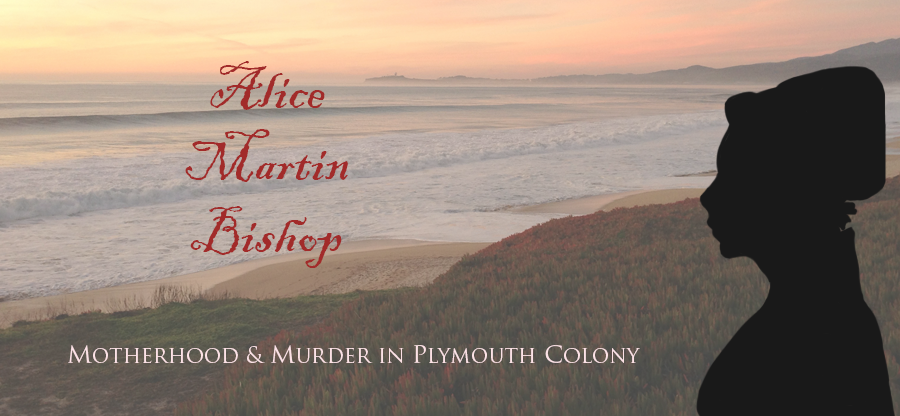Kristin Luce, July 2015
As Alice Martin Bishop (AMB) researchers, we are fortunate to be looking for information in the same time period that the Mayflower passengers landed and settled in Plymouth Colony (followed quickly thereafter by John Winthrop and the Puritans of Massachusetts Bay Colony). It’s one of the most-researched eras in U.S. history, and although we can’t place any of our AMB ancestors on that ship, we can benefit from all of the information that has been found by people who are investigating their Mayflower roots.
In the recent issue of American Ancestors (Spring 2015), David Curtis Dearborn advises genealogists looking for Mayflower ancestors to check out the following sources, most of which can be found on AmericanAncestors.org (the name of the website of the New England Historic Genealogical Society, NEGHS). If you’re a member of the NEGHS, you can access these online sources, including the published Massachusetts vital town records to 1850, all issues of The Register, The American Genealogist (TAG), The Mayflower Descendant, Barnstable County probate records, Plymouth County court records (not to be confused with the Plymouth Colony Records, see below), and Plymouth town, vital, and church records. On FamilySearch.org, you can also find digitized copies of Plymouth County probate records and land records for every Massachusetts county. (Eugene Stratton, in Plymouth Colony, also includes a chapter called “Writers and Records” that points genealogists to the written sources for contemporary information on Plymouth Colony, and it’s a good idea to refocus and go back to these primary sources after you’ve been chasing squirrels on Ancestry.)
We haven’t yet exhausted all of these sources, and we welcome our readers to jump in and help. The court records of Martha Clarke’s murder and AMB’s trial can be found in the Plymouth Colony Records (also referred to as Plymouth Court Records, and abbreviated as PCR). It’s no easy feat, but we’ll walk you the process here.
First, go this page and bookmark it so you have a handy link to the PCR consolidated index: http://plymouthcolony.net/resources/pcr.html

